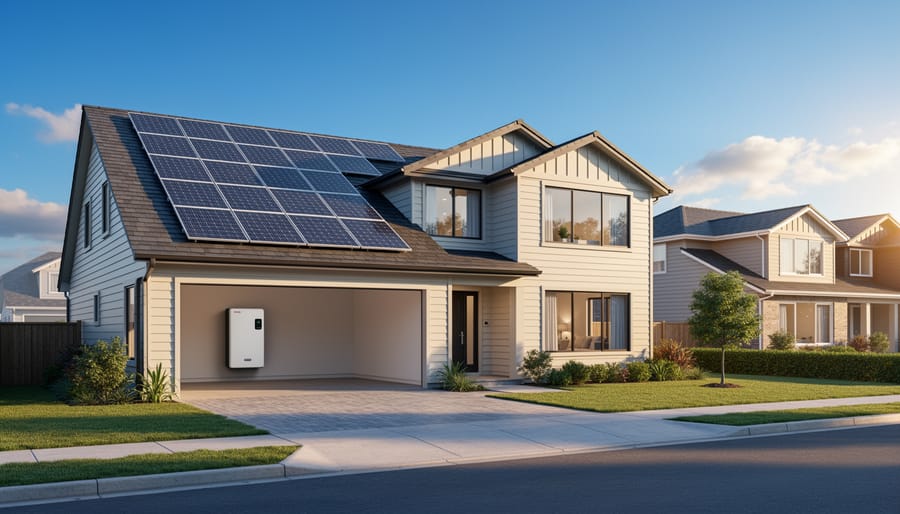Solar Lights Not Working – 6 Most Common Reasons
Updated:

From bad batteries and panels to faulty sensors and low sunlight, your solar lights may stop working for numerous reasons. However, this doesn’t mean they have lost their functionality; you can get your solar lights working again with simple tricks.
Double-check the on/off switch, assess the solar panel, look at the lamp’s circuitry, and you may be able to find the fault with your solar light.
To lend a helping hand, we explore the most common reasons for bad outdoor solar lights and walk you through a few fixes to restore their functionality.
Short on Time? These Are the 6 Most Common Reasons Why Solar Lights Stop Working
- Lack of Sunlight
- Faulty Solar Light Sensor
- Dead Batteries
- Dirty Solar Panel
- Proximity to Another Source of Light
- Water or Precipitation Build-up
Below, we expound on these points and present possible solutions to get your solar-powered lights working again.
1. Lack of Sunlight
The most common reason a solar light might have stopped working is the lack of direct sunlight. Solar lights rely on solar exposure to charge the batteries and illuminate at night, this could be particularly important if you’re trying to light a flagpole. If there’s not enough sunlight falling on the solar panels due to cloudy weather, shadow, or any other reason, the panels won’t recharge the battery, and hence the outdoor solar lights might not work.
Fix: Place the Solar Panel in Direct Sunlight
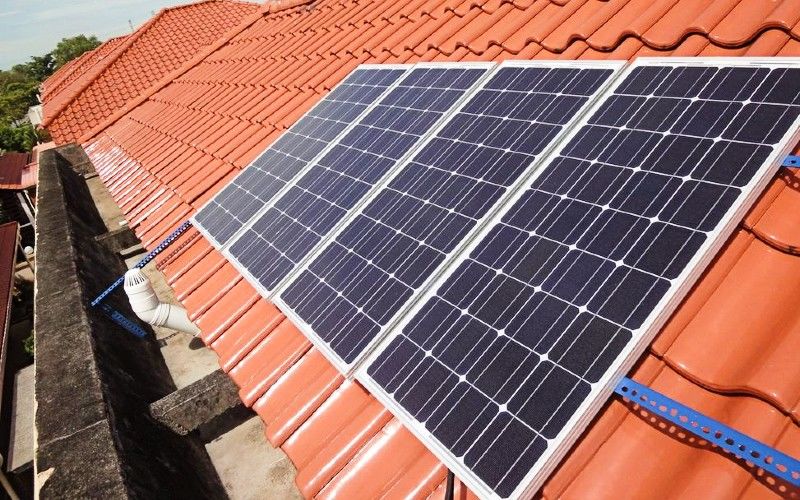
Most solar lights require only a few hours of direct sunlight to charge the batteries. But if the panels are installed in a shaded area or wrong direction, the chances are that your solar lights may not function properly. Make sure there is no plantation in the way that may cause a shadow to fall on the solar panels.
Shadows also tend to change their position with changing weather. It’s, therefore, advised to take a look at your solar panels now and then see how shaded they might be around midday.
2. Faulty Solar Light Sensor
Solar lights come with sensors that determine how dark it needs to be for the lights to activate. The sensor senses the amount of darkness and helps the light differentiate between the day and night time. If you’re using a solar light with a faulty sensor, the solar lamp won’t know when to turn on or off.
Of course, you can bypass the sensor and activate the light manually, but no one probably has the time to do it regularly.
Fix: Test the Solar Light Sensor
If the solar light seems in good condition, the fault may lie in the light sensor. Test the sensor by covering it with a sheet or cloth to see if it turns the light on.
The idea is to simulate darkness lower than the threshold required to activate the light. If the solar lamp powers up, then the sensor is at fault.
You can replace it yourself or claim it under warranty (if it applies) for replacement.
3. Dead Batteries
The solar rechargeable batteries that come with your solar light only have a limited capacity. The batteries may run out of their charging capacity after a period of time and cause the lights to stop working.
You can gauge the performance of your battery by analyzing its runtime at night after a sunny day. Good NiMH (Nickle Metal Hydride) or Li-ion (Lithium-ion) batteries should last for two to three years before needing replacement.
Fix: Replace the Batteries
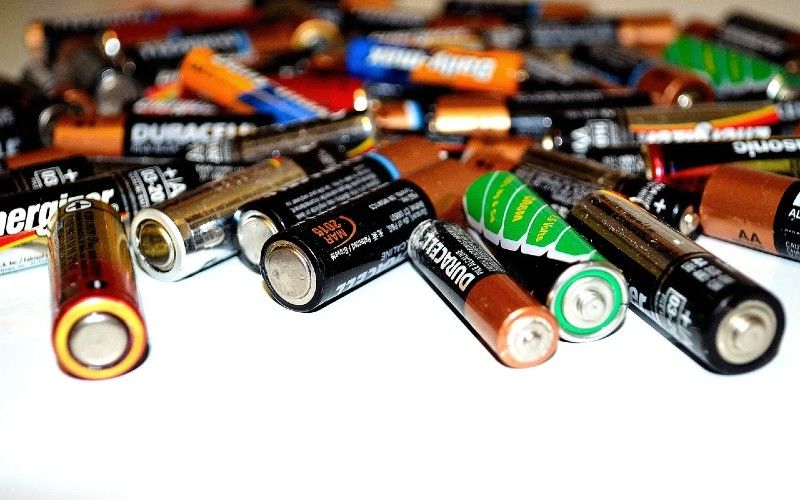
If your outdoor solar lamp has stopped working, the rechargeable batteries might need replacement. You can test the lights with a regular battery to ensure if the rechargeable battery is at fault. A faulty battery could either not get enough charge or be unable to hold it for long. In any case, you’d need to change the batteries to restore the functionality of solar lights.
We highly recommend Li-ion batteries as they are durable, require less maintenance, and have a meager self-discharge rate at room temperatures. They are commonly used in smartphones, cameras, garden lights, and solar dock lights and can operate for hours when fully charged.
4. Dirty Solar Panels
The accumulation of dust and dirt on the solar panels is another reason solar lights stop working. It can cover the solar panel and prevent it from absorbing enough sunlight to charge the batteries properly.
The layer of dust or dirt can get so thick that no amount of light from the sun may get to the panel. Sometimes leaves and debris can also cover the panel and hinder its performance.
Fix: Use a Solar Cleaning Equipment Kit
Outdoor solar lights and panels can easily get dirty over time. It’s a good idea to regularly clean the solar panel of dust and debris to improve the charging process and the lamp’s lighting time. Use a solar cleaning kit with warm water or a mild detergent to remove dust or dirt layers that may be blocking sunlight from reaching the solar panel.
It’s best to clean the solar panel and light after every major weather event, like a heavy rainstorm, but the more often you inspect and clean them, the better your odds of improving their lifespan.
5. Proximity to Another Light Source
The light sensor can react to natural and artificial light to activate or deactivate the solar light. If the solar light is installed near another light source, such as an incandescent bulb, a garage light, or shed light, it may be tricked into thinking it’s still daytime and may not turn on.
Fix: Install the Solar Light Away from Other Light Sources
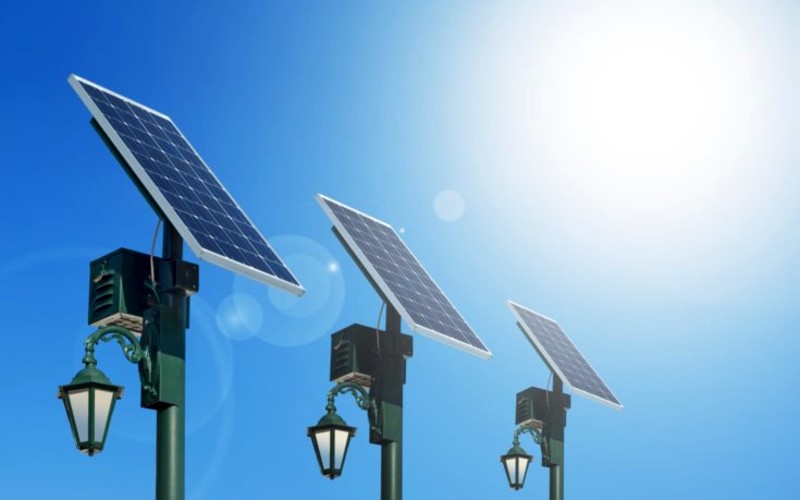
To ensure that your solar lights turn on when needed, place them somewhere away from other light sources. The sensors won’t sense any light and will activate the light when it becomes sufficiently dark.
6. Water or Precipitation Build-up
Although solar lights are known to be water and weather-resistant, a considerable residue or water may build up inside the solar panel and damage the internal wiring and circuitry. Water usually enters the panel through sealants which get ineffective over time.
Fix: Unscrew the Covering to Remove the Residue
Despite a good waterproof rating, consistent rains and water exposure can damage the light once it reaches internal components. Disconnect the light from the battery to remove the water build-up and unscrew the covering. Now use a cloth to dry the internal components of the light.
More Solutions for Solar Lights Not Working
Check the ON/OFF Switch
Although most solar lights automatically turn on and off using the light sensors, a few still come with an on/off switch. Make sure to check the state of the switch before trying any other fix. It is usually located on the side or back of the solar light.
Contact Your Retailer
The above solutions will likely fix solar lights, but if you still can’t make them work, contacting the manufacturer would make sense. Most solar-powered lights generally come with a 1-year limited warranty.
So if your solar lights stop working within the warranty period, you can contact the retailer for a return or exchange policy.
How to Deal with Moisture Problem?
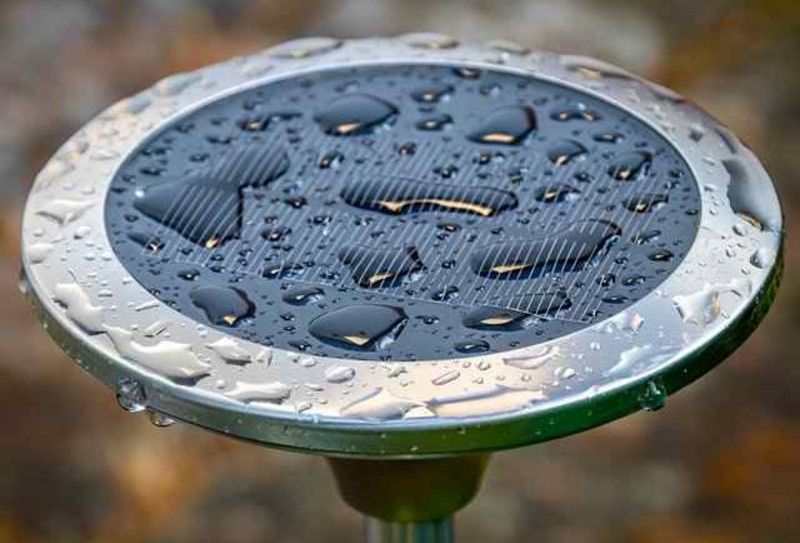
Condensation has always been a significant cause of solar lights’ breakdown. Although there’s no way to stop this natural condensation process entirely, there are ways you can make it less often. Whether you see a few water drops making their way to the lens or a substantial amount of water, it’s always worth taking a closer look at it.
However, if condensation occurs in the PIR sensors (Passive Infrared sensors) or the light’s photocell, the light’s function is usually not affected.
You have to perform a physical check immediately by following these simple steps below:
- Switch the power off and remove the light covering.
- If you see any moisture build up, put these lights in the airing cupboard for up to two days. It works to dry out water accumulation completely.
- If you want to prevent the moisture from building up next time, it’s worth placing packets of silica gel in the lights.
- Moreover, smearing the connectors and holder of the bulb with Lithium Grease makes the light water-resistant.
- Now you finally have to put the lights back on, but ensure that batteries are placed correctly.
- Switch the lights on, and you’re good to go with them.
Due to the compatibility between the particular voltage of solar lights and battery voltage, it’s always the best idea to charge the lights through mains power.
Before doing this treatment, make sure you read the manufacturer’s instructions. However, if your lights are still in warranty, you can contact the manufacturer and give them photogenic evidence.
Final Thoughts
Just like other technological gear, solar lights may break down completely or mess up a few of their functions. There are many causes, including faulty sensors, lack of sunlight, dirty panels, moisture build-up, etc.
Once you’re successful at finding the cause behind the malfunctioning of your light, you can treat the cause and get them working back again.







